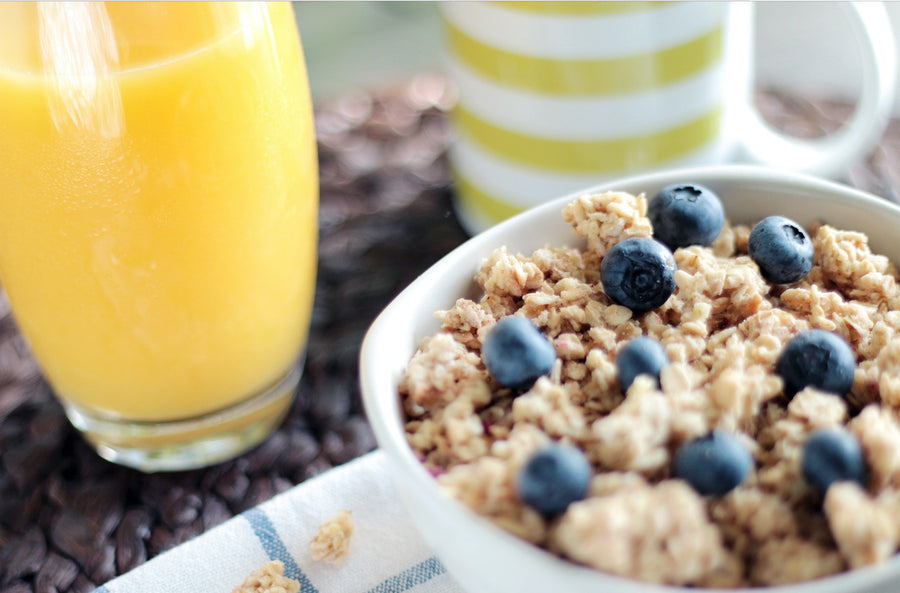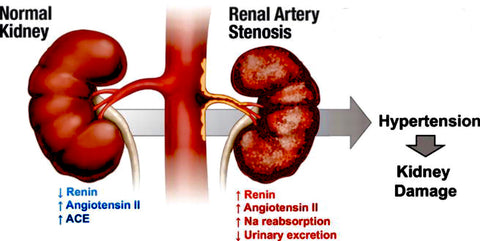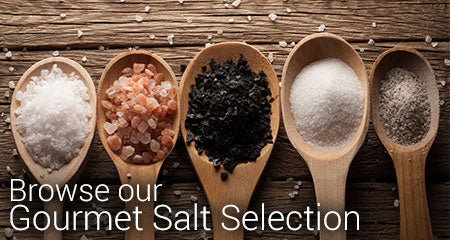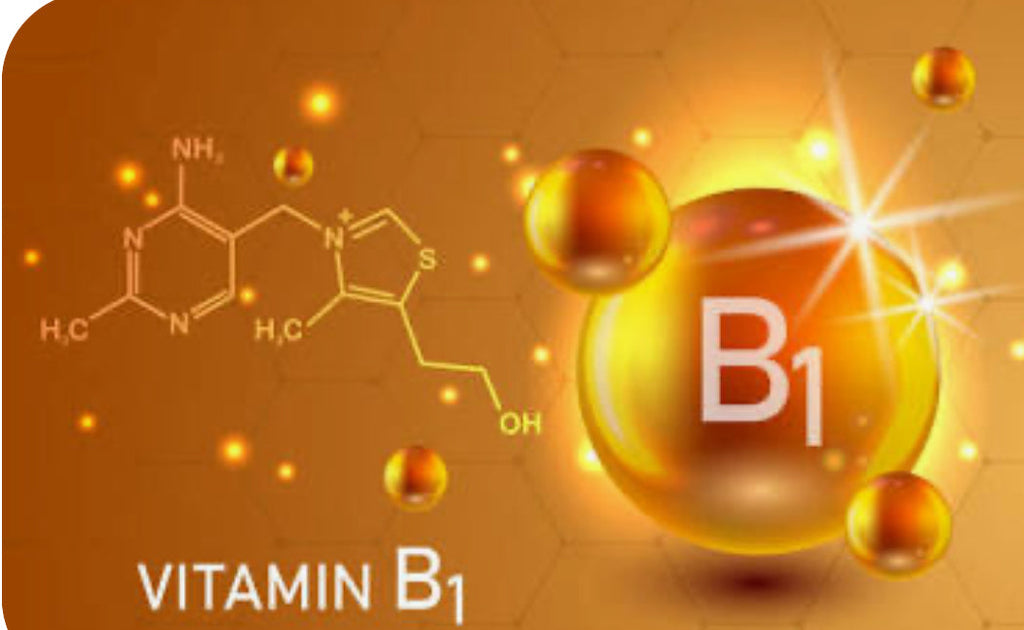The Truth About Fructose & Uric Acid # HP-EVOO - Blog # 66

Hi Everybody! Welcome back to another Friday blog. Did you realize high uric acid (UA) causes WAY MORE than gout? It causes or contributes to every known chronic non-communicable metabolic disease and syndrome that we are plagued with in today's society - obesity, NAFLD (non-alcoholic fatty liver), HTN (hypertension), CKD (chronic kidney disease), dyslipidemia (abnormal triglyceride and cholesterol ratios), stroke, coronary artery disease, Alzheimer’s and dementias - even early death!!!! We’ve all heard about fructose and glucose, but most of the focus has been on glucose and the rise in blood sugar it produces. So, what IS fructose? What does fructose do to the body? Where do we get it - and should we be consuming it or avoiding it? Let’s delve in.
Sugar is half glucose and half fructose. Fructose and glucose have the same chemical formula but are isomers - atoms are bonded in a different order - of each other and are metabolized very differently. Glucose is a major fuel of the body that is turned into ATP (energy) by our mitochondria through oxidative phosphorylation. Fructose is only metabolized by the liver, similar to alcohol. It is poison to mitochondria and drives fatty liver and dysfunction. It literally costs us ATP to process, rather than provide us with ATP. When we hear the word fructose, most of us immediately think of HFCS (high fructose corn syrup) and how it is related to obesity, T2D (type 2 diabetes) and metabolic syndrome. In the 1970’s we switched to HFCS from sucrose in soft drinks. This “added fructose intake has increased to a mean of approximately 7.5% of total energy intake.” Sugar sweetened beverages account for 46% of HFCS usage. Did you know that >60% of foods with a bar code in the grocery store have HFCS or a derivative? Sugar-sweetened beverages account for 60% of total daily sugar intake.
We all know this isn’t good for us and most of us try to avoid sodas and sweetened beverages. However, there are other sources of fructose in our diet. That “nutritious” glass of orange juice - turns out to be a sugar bomb - the high dose of fructose isn’t so nutritious for you. It contains the sugar of 8 oranges - without the fiber!!! Instead, eat the whole orange or apple that is full of phytonutrients, vitamin C and fiber that slows down the absorption. Our microbiome can handle roughly 3-4g fructose/day - that is naturally in a piece of fruit - without getting the liver involved. However, the liver does not handle high doses of fructose well at all. It is the only organ that has a cellular receptor for fructose (Glut 5). It is getting hammered. What doesn't get stored as fat in the liver gets releases as triglycerides into the bloodstream or turned into uric acid. This creates elevated vLDLs (very low-density lipoproteins) - the transportation for triglycerides. They are damaging like BBs to the arteries – triglycerides are carried on vLDL -more adherent – susceptible to oxidation and glycation -stay in circulation x 5-7 days.
What is HFCS and why is it in so many of our food products? It is a corn starch product that is modified into a highly water-soluble sugary syrup.
Nearly all corn is GMO (genetically modified organism) and sprayed with glyphosate (anti-biotic/pesticide/herbicide) The government subsidizes corn production, spending $5 billion/year! The food and beverage companies can’t afford NOT to use it to sweeten their products. “Global High Fructose Corn Syrup Market size was valued at US$ 5.02 Bn. in 2020 and the total revenue is expected to grow at 4.56% through 2021 to 2027, reaching nearly US$ 6.86 Bn.”
The ratio of Fructose:glucose in HFCS is 55-75% and much sweeter than regular table sugar, which is 50:50 fructose:glucose. It is roughly 1.5x sweeter than sucrose (table sugar). “According to the USDA, almost 90% of HFCS produced in the United States is marketed to the beverage industry.” Check out a list of sweeteners and their rating Here.
They know this. They hire taste experts, chemists and food scientists to create products that are literally SO addictive that cocaine-addicted mice in studies will not only choose HFCS and sugar over cocaine when given the choice, but work 8x harder for the sweet substance. They will even endure an electrical shock pad to get the sugar. Then these products are marketed to CHILDREN. The sooner you can addict them, the more product you can sell throughout the life of the individual. “Research scientists claim that sugar alters mood and can induce reward and pleasure, in the same way drugs such as cocaine affect the brain. They cite studies in rats where sugar was preferred to cocaine, and studies in mice where the mice experienced sugar withdrawal symptoms…Our findings clearly demonstrate that intense sweetness can surpass cocaine reward, even in drug-sensitized and -addicted individuals.” The addictive centers in our brains light up when we consume these products. Trust me…WE…ARE…ADDICTED. Even sodas with artificial sweeteners trick the body into thinking it needs to make insulin - the body perceives "sweet" and this can drive metabolic syndrome as well as the real thing.
So, what is so bad about fructose and why should we care? It is all about the way it is metabolized in the body. It previously was thought of as a “safer” sugar because metabolism of fructose occurs in the liver. It does not immediately raise insulin levels in the body like glucose does, because it (at least initially) does not require insulin for metabolism. However, when the body sees too much fructose, bad things happen. “Fructose induces a number of proinflammatory, fibrogenic, and oncogenic signaling pathways that explain its deleterious effects in the body, especially in the liver.” It is the ONLY nutrient that depletes energy in the body. It actually uses energy (ATP) to get metabolized, rather than giving you energy. Is it any wonder we are tired?

Fructose -
- Stimulates the production of glucose, called gluconeogenesis - the liver literally will turn protein and fat into glucose to drive fat storage. So, it DOES raise blood glucose, but it isn’t immediate. Further, it keeps insulin levels high thus contributing to all the metabolic diseases related to high insulin.
- Causes mitochondrial oxidative stress - the mitochondria can't process fructose very well. They are literally damaged from all the oxidation that takes place - so not only does it use ATP to metabolize it, but it further damages the mitochondria so they are not able to produce ATP levels like they should. We feel this in the level of fatigue we experience.
- Directly damages the endothelial lining of blood vessels - activating intercellular adhesion molecule-1 that uncouples eNOS (the enzyme involved in the production of NO (nitric oxide) - driving elevated blood pressure. High blood sugar, insulin, triglycerides and uric acid production damages our blood vessels and cells, drives chronic disease processes in all of our organs - brain, liver, kidneys, heart, etc.
- Drives high blood pressure - by damaging the lining of the blood vessels and inhibiting the production of NO.
- Drives IR (insulin resistance) - by elevating blood glucose and insulin
- Stimulates the formation of UA -induces conversion of blood glucose into Fructose - that is converted to uric acid - viscous cycle.
- Inhibits leptin sensitivity - leptin is a hunger-suppressing hormone that tells us we are full. If we inhibit it, we eat more. We tend to graze on whatever snacks we have around - even after eating a full meal.
- Induces fibrosis of the kidneys - damaging the micro vessels supplying the glomeruli (tiny filters) in the kidneys - resulting in impaired peripheral perfusion.
- Tells the body to store fat. Fructose is the sugar of energy storage, whereas glucose is the sugar of energy utilization. Fructose triggers our innate biology to store fat to prepare for winter - via activation of denovo lipogenesis (turning protein and carbs into fat for storage). Understand that we have hundreds of genes to save us from scarcity! Fructose tells your body that food scarcity (winter) is coming and you might starve. It is a survival mechanism - You better make fat to survive - you better turn on production of glucose to power your brain - you better elevate your blood pressure because you may not be able to find water. Think about bears getting ready to hibernate. At the end of the hot summer when the berries are ripe - bears eat hundreds of pounds of berries - full of fructose. They gain a LOT of weight in preparation for hibernation at roughly 3 lbs/day, gaining as much as 1,000 lbs! This may be why your body is hanging onto those extra pounds. You will NOT be able to lose them as long as your insulin levels are high.
- Metabolism of fructose is energy-dependent. It requires ATP! The breakdown of fructose results in the production of uric acid! That’s right, your gout or shooting pains in your big toe, or other places, are because of high consumption of fructose and sugar in your diet. This is very inflammatory. Very little uric acid is produced from meat consumption, as is often blamed as the culprit - unless you are eating lots of organ meats.
- Causes leaky gut. Fructose metabolism depletes ATP in the gut, causing leaky gut that exacerbates metabolic syndrome, HTN (hypertension), obesity, insulin resistance, T2D, dementia, chronic kidney disease and hyperlipidemia
- Promotes pro-inflammatory gut microbes. It feeds pathogenic microbes in the gut that promote inflammation throughout the body and causes dysbiosis or poor diversity of beneficial microbes.
- Fructose is alcohol without the buzz. It goes straight to the liver, following the same metabolism as alcohol. Did you know 12-year olds are needing liver transplants from so much soda - and they never had any alcohol.
- High serum sodium - “studies in rodents demonstrate that increased dietary fructose intake stimulates salt absorption in the small intestine and kidney tubules, resulting in a state of salt overload, thus setting in motion a cascade of events that will lead to hypertension.” - high sodium induces conversion of blood glucose into fructose - adding fuel to the fire.
Okay, so metabolism of fructose results in uric acid and triglycerides. As these levels rise with consumption of fructose, many undesirable things begin to happen. UA has previously only been thought of as related to gout. Now, we understand that a high level of UA has direct consequences. It is mechanistically the CAUSE of high blood pressure, CKD (chronic kidney disease), obesity, coronary artery disease, Alzheimer’s, dementias and NAFLD (non-alcoholic fatty liver disease). WHAT!!!!??? Okay, there are 3 sources of uric acid: alcohol (particularly beer), fructose and purines (breakdown of DNA, RNA). Beer, due to the yeast, has both alcohol and purines - you get a double whammy.
Let’s look at what happens when UA levels rise. “A cross-sectional study determined that each 1 mg/dL increase in serum uric acid contributes a 20% increased prevalence of hypertension in a general population not treated with hyperuricemia and hypertension. Similarly, in longitudinal cohort studies, asymptomatic hyperuricemia without comorbidities predicts the development of hypertension. Moreover, hyperuricemia also contributes to the development of hypertension from prehypertension.” Holy moly!! If your UA levels are high and you have pre-HTN, you WILL get HTN!!! If you already have HTN, you better lower your uric acid levels to save your brain and kidneys, not to mention other things that require blood flow to work!!!
Uric Acid -
- Causes HTN (high blood pressure) - Activates the renin-angiotensin pathway, compromises nitric oxide (NO) that allows our blood vessels to relax, widen and release hormones (insulin) and deliver oxygen to the tissues. UA “reacts directly with nitric oxide (NO) in a rapidly irreversible reaction resulting in the formation of 6-aminouracil and depletion of NO.” This results in system-wide low-level inflammation.
******Calcium just happens to be the body’s natural band aid. It goes where inflammation goes. If your arterial lining is inflamed, calcium will stick to it contributing to atherosclerosis and drive up blood pressure. If your vitamin D levels are low, chances are calcium is sticking to your arteries. Calcium requires vitamin D3 and K2 to move it from the arteries - into the bones.******
High UA, literally destroys the tiny blood vessels around our organs. It is a CAUSE of HTN. It is a CAUSE of CKD (chronic kidney disease). It is also a CAUSE of LVH (left ventricular hypertrophy) resulting in CHF (congestive heart failure). “Lowering uric acid is expected to be a new approach for prevention and therapy of CHF.”
This explains why some people experience gout and some don’t. However, the outcome - damage to the body - is the same.

- Directly damages kidneys - “Most UA is filtered by the kidneys and eliminated in urine. The rest passes through the gut and is cleaved by bacteria into waste substances, which are eliminated in faeces. Inefficient renal excretion of UA is the main cause of both primary and secondary hyperuricemia.” High UA levels further trigger deposition of urate crystals in main vessels. This causes inflammation and a pro-inflammatory response, causing more direct endothelial damage. It induces glomerular hypertension causing damage to the interstitial tubules.To make matters worse, soluble UA upregulates the expression of aldose reductase in the endothelium and other tissues resulting in the blocking of NO production as well as the production of endogenous fructose! The kidneys filter most UA so it is eliminated in urine. The rest passes through the gut and is cleaved by bacteria into waste substances, which are eliminated in feces. Inefficient renal excretion of UA is the main cause of both primary and secondary hyperuricemia (high blood levels of UA).The worse your kidneys become, the more they hang on to UA - driving up serum UA levels.

- Causes Atrial Fibrillation (AF) - “the first rise in UA concentration is sufficient to increase the risk of AF in both men and women (male UA baseline level was >6.5 mg/dL, and female UA baseline level was >4.9 mg/dL). This evidence is sufficient that hyperuricemia is associated with an increased risk of AF in patients with or without other chronic conditions.”
- Interferes with insulin, since insulin requires NO (nitric oxide) to do its job. Insulin needs to get out of the artery and into the muscle cell to store glucose as glycogen. If insulin can’t do it’s job, blood sugar levels rise unmitigated. Higher levels of insulin increase UA by inhibiting the release of UA from the kidneys!! UA levels rise even more - 😳
- Promotes inflammation and increases all-cause mortality dramatically. For example, mortality from cardiovascular disease is increased 40%, stroke 35%.
- Increases all-cause mortality. For every point elevation of UA above 7.0, there is an 8-13% increased risk of all-cause mortality! Holy moly!!! Ideally, it should be 4-5 for men and 3-4 for women.
- Damages the brain. Significantly increases risk for dementia and Alzheimer’s disease. A study in 2018 followed 1600 people x 12 years. They tested uric acid levels, MRI scans of brain and performed neurocognitive tests. Those with the highest UA levels were 4 times as likely to be demented with an 80% increased risk of dementia, 55% increased risk of Alzheimer’s Disease and 165% increased risk for vascular or mixed-form dementias. Elevated UA also is responsible for gliosis - or a scar-like formation in the hippocampus of the brain. This affects short, long-term and spatial memory. Our navigation skills and our limbic system is profoundly affected negatively. It can literally disconnect the higher brain from the limbic system - so the adult has left the room- we become less empathetic. Our emotions can become intense and we act out in aggressive ways. Understand where this anger and rage is coming from the next time someone cuts you off. Is your higher brain functioning, or is your limbic system reacting out of anger or rage?
- Induces expression of CRP in blood vessels - C-reactive protein is an inflammation marker on bloodwork. “Epidemiological studies have shown that UA is positively associated with several pro-inflammatory markers such as CRP, white blood cell count, IL-6 and tumor necrosis factor-alpha (TNF-α), and predicts an increase in their levels over a 3-year follow-up.”
- Induces insulin resistance. Activates aerobic glycolysis - so literally takes our stored carbohydrates (glycogen stores) and dumps them into the bloodstream as glucose to drive fat storage - inducing an insulin response. “The mechanism for uric acid-induced insulin resistance appears to be mediated by the development of mitochondrial oxidative stress and impairment of insulin-dependent stimulation of nitric oxide in endothelial cells.” Higher levels of insulin, increase UA by reducing excretion from the kidneys.
- Damages Mitochondria. “high concentrations of UA may induce oxidative stress in hepatocyte mitochondria, increasing ROS production and ultimately resulting in mitochondrial damage.” UA inhibits the activity of aconitase - disconnects fructose from mitochondrial respiration. The production of ATP is super important for proper endothelial signaling and function! We need our mitochondria to work properly or we will experience low energy, fatigue, migraine, brain fog…
- Creates the Warburg effect - increases glucose, lactate and triglycerides - literally inducing fermentation (without O2- even in the presence of O2) due to poor mitochondrial respiration (with O2). This creates an acidic environment ripe to initiate cancer!!!
- Increases all-cause mortality - A large study published 2020 in Nature followed >500,000 Japanese people, ages 40-74, for 7 years testing UA levels. “A significant increase in the hazard ratio for all-cause mortality was noted with serum uric acid levels ≥ 7 mg/dL in men and ≥ 5 mg/dL in women. A similar trend was observed for cardiovascular mortality. This study disclosed that even a slight increase in serum uric acid levels was an independent risk factor for all-cause and cardiovascular mortality in both men and women in a community-based population.” They found that for every 1 mg/dL increase in serum UA over 7, there is an increased risk of all-cause mortality of 8-13%.
- Induces storage of fat - This is from a study published in Nature May 2022 “We found that higher baseline UA was a significant predictor of less favorable BMI, triglycerides, HDL, glucose, insulin, and HOMA, independent of age, sex, baseline weight, baseline level of the outcome variable, and weight gain prevention intervention. Additionally, ≥1% weight loss was associated with lower UA.” Basically, it is a driver for metabolic dysfunction, interfering with insulin and damaging our organ systems as well as our mitochondria (batteries of the cell).
Okay, there are also some drugs that can raise UA levels: aspirin, diuretics, acid-blocking drugs, beta blockers, xylitol, Alzheimer’s drugs and even drugs that target erectile dysfunction. "Xylitol also led to unfavorable metabolic changes and a large increase in uric acid and creatinine levels. A mean increase of 1.8 mg/dl in the uric acid level was observed after xylitol intake." Additionally, many organs - including the kidneys - endogenously produce fructose through activation of the polyol pathway. Glucose is converted to sorbitol via aldose reductase (enzyme), then oxidized by sorbitol dehydrogenase (enzyme) to fructose. This tends to happen during diseased processes and with kidney damage. This drives up serum UA, making the situation worse.
Like most things, there is an ideal range - or goldilocks zone - It is bad if too high, and bad if too low. Ideal ranges for women are roughly 3-4.5 and for men 4-5.5. However, most of us have levels that are too high. So, what can we do if our UA level is high?
- Eliminate sugar and liquid sugars: sodas, all fruit juices, sweetened beverages, beer, alcoholic beverages and sweetened coffee.
- Eliminate processed food, sugar, wheat, corn, oats and soy - destroys our microbiome, causes NAFLD, induces insulin resistance, direct path to T2D, damages our mitochondria, damages our brain, leads to cancer, cardiovascular disease, thyroid dysfunction, autoimmune disorders and more…Also, these are the foods most contaminated with glyphosate.
- Exercise - exercise lowers SUA (serum uric acid) levels. “It was found that chronic exercise lowered SUA 0.3 to 3.2 mg% in 80% of the subjects in the athletic and training groups, particularly in those persons with initial values of 7.0-8.5 mg%. In addition, it was found that as a group the greatest decrease in SUA occurred in members of the athletic group who had undergone the most strenuous training program.” Okay, this doesn't have to take a lot of your time - literally short bout sprinting is one of the BEST exercises to increase fast-twitch muscle fibers and improve your health and longevity. Second best is weight-training/resistance training. Over-exercising - like long-distance running - is more inflammatory and actually more detrimental than helpful, due to increased inflammation. Start wherever you are- walking after a meal is one of the best ways you can impact blood sugar, muscle building and digestion.
- ACV - apple cider vinegar - drinking 1-2T in a glass of water before a meal has been shown to significantly lower the glucose-insulin load. It also helps acidify the stomach and enhance absorption of minerals, vitamins and breakdown of protein.
- Reduce Stress - Chronic cortisol and other stress hormones literally drive up all metabolic problems. Mindful meditation, practicing breathing techniques, sauna, or other stress-reducing practices effectively decrease these issues.
- Increase dietary fiber - eat real food in its whole form! Eat the rainbow of veggies and low-glycemic fruits as well as fermented foods to support the microbiome. Avoid juicing your fruits and veggies - this strips away the important fiber. You can make a "juice" from blended whole foods in filtered water, but don't strain it.
- Quercetin - 500mg/day lowered UA levels significantly in males after 2 weeks and even more after 4 weeks. Quercetin is a powerful scavenger of ROS (reactive oxygen species) and increases NO production. Found in capers, onions, garlic, apples and tea.
- Turmeric - Curcumin has powerful antioxidant, anti-inflammatory, epigenetic properties, detoxification and more. Increase absorption by around 2,000% by adding it to EVOO and a little cracked pepper
- Oregano - much like quercetin reduces ROS and increases NO production, powerful antimicrobial, detoxifier. Has antimicrobial properties as well.
- Resveratrol - antioxidant, anti-inflammatory, neuroprotective, epigenetic properties - grapes, wine (particularly red) - Once your levels come down, you can have some wine occasionally.
- Berberine - antioxidant, anti-inflammatory, epigenetic properties - anti-diabetic (equivalent to metformin without side effects)
- Fisetin - This human diet constituent is reported to exert some beneficial anticancer, cardiovascular preventive, anti-inflammatory, and antioxidant effects that support normal cell homeostasis and cytoprotection - grapes, apples, strawberries, onions…
- Vitamin C - Increases UA excretion and helps our blood vessels stay pliable - sauerkraut is one of the highest sources of vitamin C. Red bell peppers provide 100% RDI.
- Avoid or lower - organ meats (such as liver), meat extracts, seafood, yeasts and yeast extracts (such as beer, and alcoholic beverages), oatmeal, legumes. (Breakdown of DNA/RNA=purines)
- Sleep - We can’t function when we don’t sleep. Poor sleep drives up ghrelin that causes us to be hungry and crave sugar and carbohydrates. It is crucial to guard sleep. Get bright sunlight first thing in the am. Avoid blue light at night. Sleep is when our body repairs and literally washes our brain and sweeps our intestines, clears out dead cells and creates new, optimally functioning cells. Check out Blog # 30
- Omega 3s, particularly DHA to support brain and counteract damage that is happening inside the brain. We need our Omega 6:3 ratio to be closer to 1:1. Here in the US, most of us are around 20:1. Omit or significantly lower your omega 6 intake, particularly from inflammatory oils. Include wild caught fish - particularly small fatty fish such as sardines, kippers, anchovy, etc.
- Love/Connection/Community - Studies show people live longer when they have love and connection to others and are involved in community. This does SOO many good things for us including lowering inflammation, combatting oxidative stress and more. You can layer many of these suggestions with one another - getting together with like-minded people, sharing real food, exercising together including yoga and meditation - get involved.
- HP-EVOO - high polyphenol extra virgin olive oil - the polyphenols in EVOO literally tell DNA which genes to turn on and off. It works epigenetically to turn on the good genes and turn off the bad ones, such as cancer (oncogenes) genes. It is healing to our vascular and gut epithelium and AMAZING at attacking cardiovascular disease, HTN, insulin resistance, enhances mitochondrial function and microbiome diversity and enhance the activity of sirtuins. “Sirtuins are reported to modulate numerous activities by controlling gene expression, DNA repair, metabolism, oxidative stress response, mitochondrial function, and biogenesis. Deregulation of their expression and/or action may lead to tissue-specific degenerative events involved in the development of several human pathologies, including cancer, neurodegeneration, and cardiovascular disease.” It has powerful anti-inflammatory, antioxidant, anti-cancer, neuroprotective, cardiovascular protective, helps to reverse NAFLD and so many other properties! The higher the polyphenols, the better.
So, until next time my friends…Drink, Drizzle, Digest HP-EVOO at least 4T raw daily, - use more for cooking and drizzling onto your food - eat the rainbow of organic or wild-sourced or organic veggies (7-9 C) and low-glycemic fruits (to get the rainbow of gut microbes!) - eat wild-caught, pasture-raised, grass-fed - get plenty of sunshine - supplement magnesium, zinc, vitamin D3 + K2 - get your trace minerals and electrolytes with good sea salt - Celtic is hand-harvested and Himalayan was formed before plastics - eat foods high in lutein - drink your body weight in oz of water - get a good pre/probiotic - consume digestible and indigestible fiber for your gut microbes - adaptogens (such as mushrooms) and methylation donors (kale, beets, spinach, cruciferous, lion’s mane…), marjoram, rosemary, oregano, parsley and other herbs to detox, enhance overall health and reverse aging and disease - exercise your body and mind - add a few minutes of mindful meditation to your day to combat stress - take a hot Epsom salt bath and follow with a cold shower/ice plunge - practice “earthing” as an anti-inflammatory - remove EMF (electromagnetic frequency) devices and blue light - use IR (infrared) from incandescent lighting, non-toxic candle or light a fire to enhance sleep and...turn off the light!! #HP-EVOO
This blog is intended for informational purposes only. Discuss strategies with your Healthcare Practitioner.







Comments (2)
Is beet juice a way to control blood pressure? Is it good for you
Hi Curt!
This is a great question. Beets are high in nitrates that provide substrate for nitric oxide that promotes vasodilation, lowering blood pressure. There is some benefit in the literature using beet juice. However, when you juice beets, you are removing the fiber – this is one of the MOST beneficial parts of the beet because it feeds your microbiome – resulting in bacterial postbiotic products that FURTHER lower blood pressure and feed the cells in the colon. Gently steam until tender-crisp and enjoy 3x/week with goat cheese! I always embellish with fresh garlic (myricetin) super thin red onion (quercetin) citrus – organic lemon zest and a squeeze of lemon (luteolin) – a sprinkle of pomegranate seeds (cyanidin) and a blend of fresh herbs like dill (kaempferol) – detoxifiers. These phytochemicals are KNOWN xanthine oxidase inhibitors that prevent the formation of uric acid!!
Wishing you health and happiness Curt!
Julie